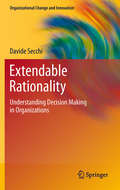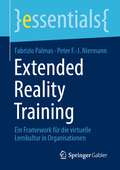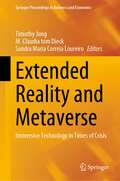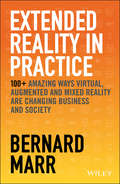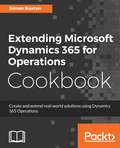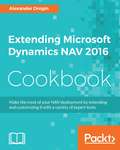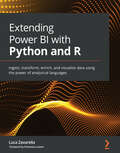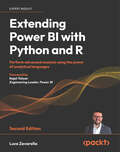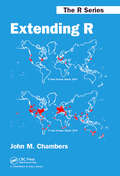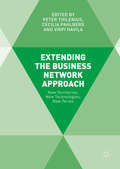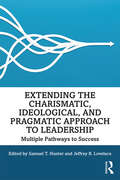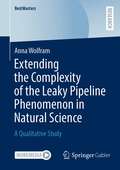- Table View
- List View
Extend Fertility: Conceiving the Market for Egg Preservation (A)
by Debora L. Spar Olivia HullIn April 2003, entrepreneur and MBA student Christy Jones was planning a new venture to help women preserve their fertility. Her company, Extend Fertility, would commercialize a technique known as egg freezing, in which a woman's eggs were extracted and stored at low temperatures until she was ready to become a mother. To date, the emerging technology had mostly been used to preserve the fertility of cancer patients whose treatment course could damage their eggs. Jones's business would target a massively broader population: healthy women wishing to postpone motherhood. Before Jones could launch Extend Fertility, she needed to answer two pressing questions. What, exactly, would an egg-freezing service be selling? And to whom?
Extend Profits, Not Product Lines
by John A. Quelch David KennyIn the last 10 years, products have proliferated in every category of consumer goods and services, and the deluge shows few signs of letting up. Most companies are pursuing product expansion strategies--in particular, line extensions--full steam ahead. But more and more evidence is indicating the pitfalls of such aggressive tactics. The strategic role of each product becomes muddled when a line is oversegmented. Also, a company that extends its line risks undermining brand loyalty. Some companies, such as Procter & Gamble, Chrysler, and a leading U.S. snack foods company, have discovered that a carefully focused and well-managed line can increase profits and sales volume. John A. Quelch and David Kenny describe how marketing managers can sharpen their product-line strategies by improving cost accounting, allocating resources to popular products, researching consumer behavior, coordinating marketing efforts, working with channel partners, and fostering a climate in which product-line deletions are not only accepted but also encouraged.
ExtendSim (R) Simulation Exercises in Process Analysis (A)
by Roy D. ShapiroFirst set of exercises meant to be used with ExtendSim, a simulation system created by Imagine That, Inc. of San Jose, California. These exercises allow students to investigate the impact of variable processing times on the performance of simple in-line processes. Unadvertised per Case Records.
ExtendSim (R) Simulation Exercises in Process Analysis (A2)
by Roy D. ShapiroSolutions and detailed discussion of exercises from the (A) case. Unadvertised per Case Records.
ExtendSim (R) Simulation Exercises in Process Analysis (B)
by Roy D. ShapiroSecond set of exercises meant to be used with ExtendSim, a simulation package created by Imagine That, Inc. of San Jose, California, that allows students to investigate the impact of adding buffers to simple in-line processes with uncertain processing times. Unadvertised per Case Records.
ExtendSim (R) Simulation Exercises in Process Analysis (B2)
by Roy D. ShapiroSolutions and detailed discussion of exercises from the (B) case. Unadvertised per Case Records.
ExtendSim (TM) Simulation Exercises in Process Analysis, User's Guide
by Roy D. Shapiro Ann E. GrayDesigned to be used with ExtendSim Simulation Exercies in Process Analysis (A) and (B). Unadvertised per Case Records.
Extendable Rationality
by Davide Secchi"How do people make decisions in organizations?" is the question at the core of this book. Do people act rationally? Under what conditions can information and knowledge be shared to improve decision making? Davide Secchi applies concepts and theories from cognitive science, organizational behavior, and social psychology to explore the dynamics of decision making. In particular, he integrates "bounded rationality" (people are only partly rational; they have (a) limited computational capabilities and (b) limited access to information) and "distributed cognition" (knowledge is not confined to an individual, but is distributed across the members of a group) to build upon the pioneering work of Herbert Simon (1916-2001) on rational decision making and contribute fresh insights. This book is divided into two parts. The first part (Chapters 2 to 5) explores how recent studies on biases, prospect theory, heuristics, and emotions provide the so-called "map" of bounded rationality. The second part (Chapter 6 to 8) presents the idea of extendable rationality. In this section, Secchi identifies the limitations of bounded rationality and focuses more heavily on socially-based decision processes and the role of "docility" in teaching, managing, and executing decisions in organizations. The practical implications extend broadly to issues relating to change and innovation, as organizations adapt to evolving market conditions, implementing new systems, and effectively managing limited resources. The final chapter outlines an agenda for future research to help understand the decision making characteristics and capabilities of an organization.
Extended Confiscation of Illicit Assets and the Criminal Law: National and EU Perspectives (The Law of Financial Crime)
by Elżbieta Hryniewicz-LachThe European Union is developing instruments which allow law enforcement and judicial authorities to freeze, seize and confiscate illicit assets in a simplified way. Oversimplification of confiscation procedures may, however, result in violation of fundamental rights and general principles of law aimed at ensuring protection of individuals against interference from the State. Such risk exists in particular in the case of extended confiscation, where assets forfeited go beyond what is proven as resulting from a concrete criminal offence. This book drawing on the results of a large international project, brings together a group of experts to determine the requirements needed to achieve compliance of extended confiscation with the fundamental rights and legal principles included in the Charter of Fundamental Rights of the EU, European Convention of Human Rights and in national legal orders of the EU Member States. Divided into three parts, the first details the national perspectives of 14 countries. The second part presents analysis of extended confiscation in comparative terms. The third and final parts examine extended confiscation in the context of the EU criminal law. The book thus provides a detailed analysis of extended confiscation from a number of perspectives and will be an invaluable resource for academics, researchers and policymakers working in the areas of Financial Crime, Comparative Criminal Justice and Human Rights Law.
Extended Reality Training: Ein Framework für die virtuelle Lernkultur in Organisationen (essentials)
by Peter F.-J. Niermann Fabrizio PalmasDer technologische Fortschritt hat bereits unsere Art zu kommunizieren, zu lernen, zu arbeiten und uns zu informieren radikal verändert. Lernen ist der Motor einer wettbewerbsfähigen Gesellschaft und sichert langfristig den Erfolg. Alle Stakeholder sollten daher bereit sein, in Corporate Training zu investieren. Dieses Essential entwickelt eine Gesamtkonzeption für ein innovatives xR-Training und bietet notwendige interdisziplinäre Kenntnisse und den richtigen Mix aus Theorie sowie praktischen Guidelines, um die Vorteile von Extended Reality-Technologien nutzen zu können.
Extended Reality and Metaverse: Immersive Technology in Times of Crisis (Springer Proceedings in Business and Economics)
by Timothy Jung M. Claudia tom Dieck Sandra Maria Correia LoureiroThis book features the latest research in the area of immersive technologies as presented at the 7th International Extended Reality (XR) Conference, held in Lisbon, Portugal in 2022.Bridging the gap between academia and industry, it showcases the latest advances in augmented reality (AR), virtual reality (VR), extended reality (XR) and metaverse and their applications in various sectors such as business, marketing, retail, education, healthcare, tourism, events, fashion, entertainment, and gaming. The volume gathers selected research papers by prominent AR, VR, XR and metaverse scholars from around the world. Presenting the most significant topics and latest findings in the fields of augmented reality, virtual reality, extended reality and metaverse, it will be a valuable asset for academics and practitioners alike.
Extended Reality in Practice: 100+ Amazing Ways Virtual, Augmented and Mixed Reality Are Changing Business and Society
by Bernard MarrDiscover one of the biggest business trends of today Extended reality (XR for short) – which encompasses virtual reality, augmented reality and mixed reality – is one of the biggest business trends of today. It refers to the use of technology to create more immersive digital experiences which are promising to transform many businesses and industries. In this book, best-selling author, strategic business advisor, and respected futurist Bernard Marr explains the role of XR in providing innovative businesses solutions for companies of varying sizes and across different industries. He introduces the three main branches of extended reality - virtual, augmented and mixed reality. You will discover how businesses and organisations are implementing the technology, with case examples, including some of the world’s biggest brands, to showcase how they are starting to use XR in practice. Extended Reality in Practice is a must read for anyone wanting to learn exciting and entirely new ways for people to experience the world around them – and for businesses, new ways to connect and engage with customers and improve business processes.
Extended Reality in Wirtschaft, Wissenschaft, Gesellschaft und Medien: Immersive Technologien und virtuelle Welten: Grundlagen, Status quo, Ein- und Ausblicke
by Bolela Likafu Christian MaltererDieses Buch gibt einen grundlegenden und holistischen Überblick über die Extended-Reality-Branche (XR) in Deutschland. XR beschreibt als Sammelbegriff Augmented Reality, Virtual Reality und Mixed Reality – also virtuelle Welten, in denen sich derzeit nicht nur im Gaming-Bereich vollkommen neue Interaktionspotentiale und Geschäftsmodelle eröffnen. Solche immersiven Technologien werden in Zukunft für nahezu alle Lebens- und Wirtschaftsbereiche interessant sein: Marketing, Medizin, Handel, Forschung, Bildung oder Kultur – um nur einige zu nennen.Dieses Werk ist aus einer Initiative der Herausgeber entstanden, innerhalb der deutschen Immersive-Media-Branche einen offenen XR-Thinktank als dynamische Austauschgemeinschaft heterogener Akteure und Stakeholder ins Leben zu rufen.Ziel des Buches ist es, das Thema einzuordnen und seine Relevanz anhand von Fallstudien aus verschiedenen Branchen sowie Experteninterviews zu untermauern. Die Beitragsautoren und Interviewpartner wollen so den Wissenstransfer vorantreiben.
Extended Warranties, Maintenance Service and Lease Contracts
by D.N.Prabhakar Murthy Nat JackServing to unify the existing literature on extended warranties, maintenance service contracts and lease contracts, this book also presents a unique perspective on the topic focussed on cost analysis and decision-making from the perspectives of the parties involved. Using a game theoretic approach together with mathematical modelling, results are presented in an integrated manner with key topics that require further research highlighted in order to serve as a starting point for researchers (engineers and statisticians) who are interested in doing further work in these areas. Designed to assist practitioners (managers, engineers, applied statisticians) who are involved with extended warranties, maintenance service contracts and lease contracts, the book provides them with the models and techniques needed for proper cost analysis and effective decision-making, The book is also suitable for use as a reference text in industrial engineering, applied statistics, operations research and management.
Extended Working Life Policies: International Gender and Health Perspectives
by Jim Ogg Debra Street Áine Ní Léime Martina Rašticová Clary Krekula Monika Bédiová Ignacio Madero-CabibThis open access book addresses the current debate on extended working life policy by considering the influence of gender and health on the experiences of older workers. Bringing together an international team of scholars, it tackles issues as gender, health status and job/ occupational characteristics that structure the capacity and outcomes associated with working longer. The volume starts with an overview of the empirical and policy literature; continues with a discussion of the relevant theoretical perspectives; includes a section on available data and indicators; followed by 25 very concise and unique country reports that highlight the main extended working life (EWL) research findings and policy trajectories at the national level. It identifies future directions for research and addresses issues associated with effective policy-making. This volume fills an important gap in the knowledge of the consequences of EWL and it will be an invaluable source for both researchers and policy makers.
Extending Activity-Based Cost Systems
by Robert S. Kaplan Robin CooperWhat advances and enhancements can be made in activity-based cost (ABC) systems to extend their usefulness, application, and impact? How can organizations move from their episodic Stage II systems to wide-scale organizational implementation, where ABC systems become fully integrated into the ongoing management, reporting, and control systems? This chapter discusses the extension of ABC methodology to all organizational spending and expenses.
Extending Microsoft Dynamics 365 Finance and Supply Chain Management Cookbook: Create and extend secure and scalable ERP solutions to improve business processes, 2nd Edition
by Simon BuxtonA practical recipe-based guide to extend your Dynamics 365 Finance and Supply chain management implementation. Key Features Extend Dynamics 365 Finance and Supply Chain Management features in a cost-effective manner Learn how to integrate with other applications and services securely using Business Events, OData and the Service Bus Extend and hook into standard processes safely using Chain of Command Book Description Dynamics 365 Finance and Supply Chain Management is Microsoft's ERP solution, which can be implemented as a cloud or on-premise solution to facilitate better decision-making with the help of contemporary, scalable ERP system tools. This book is updated with the latest features of Dynamics 365 Finance and Supply Chain Management including Chain of Command (CoC), Acceptance Test Libraries (ATL), and Business Events. The book not only features more than 100 tutorials that allow you to create and extend business solutions, but also addresses specific problems and offers solutions with insights into how they work. This cookbook starts by helping you set up a Azure DevOps project and taking you through the different data types and structures used to create tables. You will then gain an understanding of user interfaces, write extensible code, manage data entities, and even model Dynamics 365 ERP for security. As you advance, you'll learn how to work with various in-built Dynamics frameworks such as SysOperation, SysTest, and Business Events. Finally, you'll get to grips with automated build management and workflows for better application state management. By the end of this book, you'll have become proficient in packaging and deploying end-to-end scalable solutions with Microsoft Dynamics 365 Finance and Supply Chain Management. What you will learn Understand the importance of using patterns and frameworks for creating unique solutions Write code that can make your solution extendable Leverage new frameworks that allow your solution to adapt as your business grows Design the UI and business logic to fit standard patterns Understand how to not only write unit tests, but also perform efficient unit testing to automate the testing process Design your security model and policies to provide code access privileges Who this book is for This Dynamics 365 book is for anyone who wants to learn Dynamics 365 Finance and Supply Chain Management development or migrate from C# or Microsoft Dynamics AX 2012 (or prior) development. Although finance and Supply Chain Management experience is not necessary, a background in software development is required. You will also need access to Microsoft's Lifecycle Services to download the necessary development tools.
Extending Microsoft Dynamics 365 for Operations Cookbook
by Simon BuxtonHave the best tools at your fingertips to extend and maximize the efficiency of your business management About This Book • Follow practical and easy-to-grasp examples, illustrations and coding to make the most out of Dynamics 365 for Operations in your business scenario • Extend Dynamics 365 for Operations in a cost-effective manner by using tools you already have • Solve common business problems with the valuable features of Dynamics 365 for Operations Who This Book Is For This book is for those who are getting to grips with Dynamics 365 for Operations developers or those migrating from C# development. The guide includes information essential for new and experienced Dynamics 365 for Operations developers. What You Will Learn • Create enumerated and extended data types • Understand the importance of using patterns and frameworks while creating a unique concept for your solution • Service and deploy your code and packages to improve performance • Write and perform unit tests to automate the testing process • Design your security model and policies to provide code access privileges • Construct the UI and business logic to add Power BI to dashboards In Detail Dynamics 365 for Operations is the ERP element of Microsoft's new Dynamics 365 Enterprise Edition. Operations delivers the infrastructure to allow businesses to achieve growth and make better decisions using scalable and contemporary ERP system tools. This book provides a collection of “recipes” to instruct you on how to create—and extend—a real-world solution using Operations. All key aspects of the new release are covered, and insights into the development language, structure, and tools are discussed in detail. New concepts and patterns that are pivotal to elegant solution designs are introduced and explained, and readers will learn how to extend various aspects of the system to enhance both the usability and capabilities of Operations. Together, this gives the reader important context regarding the new concepts and the confidence to reuse in their own solution designs. This “cookbook” provides the ingredients and methods needed to maximize the efficiency of your business management using the latest in ERP software—Dynamics 365 for Operations. Style and approach The book takes a practical recipe-based approach, focusing on real-world scenarios and giving you all the information you need to build a strong Dynamics 365 for Operations implementation.
Extending Microsoft Dynamics NAV 2016 Cookbook
by Alexander DroginMake the most of your NAV deployment by extending and customizing it with a variety of expert tools About This Book • Extend Dynamics in a cost-effective manner by using tools that are ready at your disposal • Solve common business problems with the valuable features and flexibility of Dynamics NAV • Follow practical and easy-to-grasp examples, illustrations, and coding to make the most out of Dynamics NAV in your organisation Who This Book Is For This book is for Dynamics NAV developers and administrators who have a good knowledge level and understanding of Dynamics NAV application development and administration. What You Will Learn • Develop a module in Dynamics NAV using C/AL • Build relationships with COM technologies • Develop and integrate COM with Dynamics NAV 2016 • Call the framework members from C/AL • Develop an event in the .NET framework and see how to subscribe to it using C/AL • Automate the deployment into Dynamics NAV • Develop Windows Client Control add-Ins • Deploy your resource automatically from Visual Studio • Install and Configure Windows Client Control add-Ins • Integrate Dynamics NAV with Sharepoint In Detail Microsoft Dynamics NAV is an enterprise resource planning (ERP) software suite for organizations. The system offers specialized functionality for manufacturing, distribution, government, retail, and other industries. Its integrated development environment enables customizations with minimal disruption to business processes. The book starts explaining the new features of Dynamics NAV along with how to create and modify a simple module. Moving on, you will learn the importance of thinking beyond the boundaries of C/AL development and the possibilities opened by with it. Next, you will get to know how COM can be used to extend the functionalities of Dynamics NAV. You'll find out how to extend the Dynamics NAV 2016 version using .NET interoperability and will see the steps required to subscribe to .NET events in order to extend Dynamics NAV. Finally, you'll see the cmdlets available to manage extension packages. By the end of the book, you will have the knowledge needed to become more efficient in selecting the extending methods, developing and deploying them to the Dynamics NAV, and practicing the best practices. Style and approach The book follows a practical recipe-based approach focusing on real-world scenarios and giving you all the information you need to build a strong Dynamics NAV implementation.
Extending Power BI with Python and R: Ingest, transform, enrich, and visualize data using the power of analytical languages
by Francesca Lazzeri Luca ZavarellaPerform more advanced analysis and manipulation of your data beyond what Power BI can do to unlock valuable insights using Python and RKey FeaturesGet the most out of Python and R with Power BI by implementing non-trivial codeLeverage the toolset of Python and R chunks to inject scripts into your Power BI dashboardsImplement new techniques for ingesting, enriching, and visualizing data with Python and R in Power BIBook DescriptionPython and R allow you to extend Power BI capabilities to simplify ingestion and transformation activities, enhance dashboards, and highlight insights. With this book, you'll be able to make your artifacts far more interesting and rich in insights using analytical languages.You'll start by learning how to configure your Power BI environment to use your Python and R scripts. The book then explores data ingestion and data transformation extensions, and advances to focus on data augmentation and data visualization. You'll understand how to import data from external sources and transform them using complex algorithms. The book helps you implement personal data de-identification methods such as pseudonymization, anonymization, and masking in Power BI. You'll be able to call external APIs to enrich your data much more quickly using Python programming and R programming. Later, you'll learn advanced Python and R techniques to perform in-depth analysis and extract valuable information using statistics and machine learning. You'll also understand the main statistical features of datasets by plotting multiple visual graphs in the process of creating a machine learning model.By the end of this book, you'll be able to enrich your Power BI data models and visualizations using complex algorithms in Python and R.What you will learnDiscover best practices for using Python and R in Power BI productsUse Python and R to perform complex data manipulations in Power BIApply data anonymization and data pseudonymization in Power BILog data and load large datasets in Power BI using Python and REnrich your Power BI dashboards using external APIs and machine learning modelsExtract insights from your data using linear optimization and other algorithmsHandle outliers and missing values for multivariate and time-series dataCreate any visualization, as complex as you want, using R scriptsWho this book is forThis book is for business analysts, business intelligence professionals, and data scientists who already use Microsoft Power BI and want to add more value to their analysis using Python and R. Working knowledge of Power BI is required to make the most of this book. Basic knowledge of Python and R will also be helpful.
Extending Power BI with Python and R: Perform advanced analysis using the power of analytical languages
by Luca ZavarellaIngest, transform, manipulate, and visualize your data beyond Power BI's capabilities. Purchase of the print or Kindle book includes a free eBook in PDF format.Key FeaturesDiscover best practices for using Python and R in Power BI by implementing non-trivial codeEnrich your Power BI dashboards using external APIs and machine learning modelsCreate any visualization, as complex as you want, using Python and R scriptsBook DescriptionThe latest edition of this book delves deep into advanced analytics, focusing on enhancing Python and R proficiency within Power BI. New chapters cover optimizing Python and R settings, utilizing Intel's Math Kernel Library (MKL) for performance boosts, and addressing integration challenges. Techniques for managing large datasets beyond available RAM, employing the Parquet data format, and advanced fuzzy matching algorithms are explored. Additionally, it discusses leveraging SQL Server Language Extensions to overcome traditional Python and R limitations in Power BI. It also helps in crafting sophisticated visualizations using the Grammar of Graphics in both R and Python. This Power BI book will help you master data validation with regular expressions, import data from diverse sources, and apply advanced algorithms for transformation. You'll learn how to safeguard personal data in Power BI with techniques like pseudonymization, anonymization, and data masking. You'll also get to grips with the key statistical features of datasets by plotting multiple visual graphs in the process of building a machine learning model. The book will guide you on utilizing external APIs for enrichment, enhancing I/O performance, and leveraging Python and R for analysis. You'll reinforce your learning with questions at the end of each chapter.What you will learnConfigure optimal integration of Python and R with Power BIPerform complex data manipulations not possible by default in Power BIBoost Power BI logging and loading large datasetsExtract insights from your data using algorithms like linear optimizationCalculate string distances and learn how to use them for probabilistic fuzzy matchingHandle outliers and missing values for multivariate and time-series dataApply Exploratory Data Analysis in Power BI with RLearn to use Grammar of Graphics in PythonWho this book is forThis book is for business analysts, business intelligence professionals, and data scientists who already use Microsoft Power BI and want to add more value to their analysis using Python and R. Working knowledge of Power BI is required to make the most of this book. Basic knowledge of Python and R will also be helpful.
Extending R (Chapman & Hall/CRC The R Series)
by John M. ChambersUp-to-Date Guidance from One of the Foremost Members of the R Core Team Written by John M. Chambers, the leading developer of the original S software, Extending R covers key concepts and techniques in R to support analysis and research projects. It presents the core ideas of R, provides programming guidance for projects of all scales, and introduces new, valuable techniques that extend R. The book first describes the fundamental characteristics and background of R, giving readers a foundation for the remainder of the text. It next discusses topics relevant to programming with R, including the apparatus that supports extensions. The book then extends R’s data structures through object-oriented programming, which is the key technique for coping with complexity. The book also incorporates a new structure for interfaces applicable to a variety of languages. A reflection of what R is today, this guide explains how to design and organize extensions to R by correctly using objects, functions, and interfaces. It enables current and future users to add their own contributions and packages to R. A 2017 Choice Outstanding Academic Title
Extending the Business Network Approach
by Peter Thilenius Cecilia Pahlberg Virpi HavilaContributing pioneering new research, this innovative book proposes newways and directions in which to extend the influential 'business networksperspective' approach to doing business. While previous research has focusedupon relationships with customers and suppliers, the authors argue that thereis a need to expand the outlook to include other stakeholders. Taking a standin a broad management perspective, chapters relate contemporary issues withinindustrial and international marketing, product innovation, and informationsystems. Challenging existing views and proposing elaborate alternatives; thisvolume examines a range of examples that have inspired researchers to extendthe business network. To provide further understanding, Extending the Business Network Approach relates current and newresearch to territories, technologies and terms to reveal novel insights, andto encourage further directions for research.
Extending the Charismatic, Ideological, and Pragmatic Approach to Leadership: Multiple Pathways to Success
by Samuel T. Hunter Jeffrey B. LovelaceThe past 15 years of leadership research have taught us a valuable lesson: There is more than one way to be a successful leader. The Charismatic, Ideological, and Pragmatic (CIP) approach to leadership showcases three unique yet equally viable pathways to leading and influencing others. This book reviews the history of the CIP model of leadership and summarizes the empirical findings supporting the framework. Emerging areas of leadership research on the CIP model are explored, including: followership, shared leadership, measurement, and gender. Contributions from a range of international academics provide readers with insight into the foundation of the CIP theory of leadership and into where the future of leadership perspectives are headed. It includes a chapter for practitioners seeking to understand the framework through an applied lens and offers evidence for a new scale designed to quantify a leader’s CIP profile. Finally, a revised theoretical framework, incorporating key findings to expand the model to meet the diverse needs of future researchers and leaders is offered. This thought-provoking volume will be essential reading for all scholars, researchers and students interested in the charismatic, ideological, and pragmatic approach to leadership, as well as professionals considering the introduction of a new leadership model.
Extending the Complexity of the Leaky Pipeline Phenomenon in Natural Science: A Qualitative Study (BestMasters)
by Anna WolframIn the realm of global innovation, STEM powers knowledge-based societies. However, ongoing gender disparities curtail the complete utilisation of human capital. As argued in the goal congruity theory, women's choices to communal goals prompts female exits from STEM. Exploring this theory in natural science and academia, two questions arise: 1) Does the "leaky pipeline" persist, and where are gaps? 2) Do female scientists leave to afford other goals? Stats show early career gender balance, but senior positions lack women. Notably, men dominate decision-making roles. Qualitative research with 26 female scientists reveals an overall positive and communal perception of natural science and academia. Moreover, the perceived affordance of communal values within science majorly contributes to the desire of female researchers to continue pursuing an academic path. These findings contradict the literature-established goal congruity theory and thus, provide an experienced-based foundation to extend the complexity of the leaky pipeline phenomenon in natural science.

